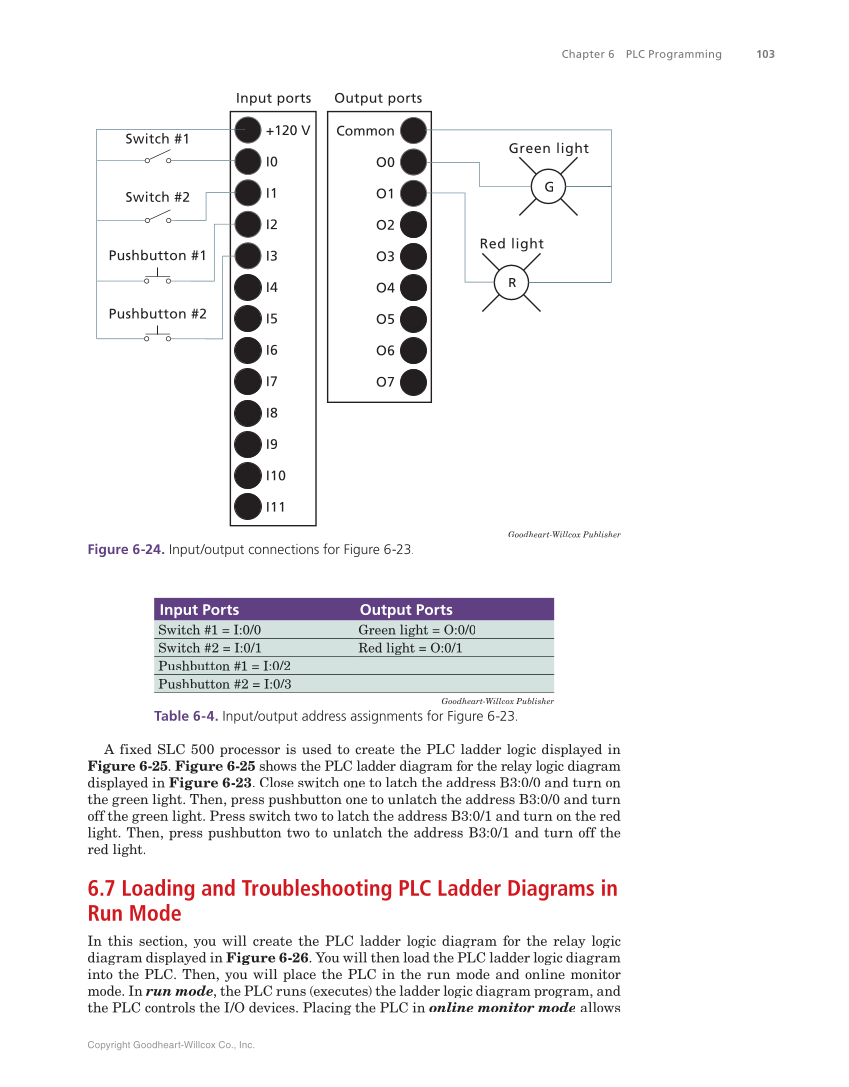Copyright Goodheart-Willcox Co., Inc. Chapter 6 PLC Programming 103 +120 V I0 I1 I2 I3 I4 I5 I6 I7 I8 I9 I10 I11 Input ports Common O0 O1 O2 O3 O4 O5 O6 O7 Output ports Switch #1 Switch #2 Pushbutton #1 Pushbutton #2 R G Green light Red light Goodheart-Willcox Publisher Figure 6-24. Input/output connections for Figure 6-23. Goodheart-Willcox Publisher Table 6-4. Input/output address assignments for Figure 6-23. Input Ports Output Ports Switch #1 = I:0/0 Green light = O:0/0 Switch #2 = I:0/1 Red light = O:0/1 Pushbutton #1 = I:0/2 Pushbutton #2 = I:0/3 A fixed SLC 500 processor is used to create the PLC ladder logic displayed in Figure 6-25. Figure 6-25 shows the PLC ladder diagram for the relay logic diagram displayed in Figure 6-23. Close switch one to latch the address B3:0/0 and turn on the green light. Then, press pushbutton one to unlatch the address B3:0/0 and turn off the green light. Press switch two to latch the address B3:0/1 and turn on the red light. Then, press pushbutton two to unlatch the address B3:0/1 and turn off the red light. 6.7 Loading and Troubleshooting PLC Ladder Diagrams in Run Mode In this section, you will create the PLC ladder logic diagram for the relay logic diagram displayed in Figure 6-26. You will then load the PLC ladder logic diagram into the PLC. Then, you will place the PLC in the run mode and online monitor mode. In run mode, the PLC runs (executes) the ladder logic diagram program, and the PLC controls the I/O devices. Placing the PLC in online monitor mode allows
